Origins And History Of Green Beans
Green beans are a beloved vegetable that are enjoyed all around the world. But where did they come from, and what is their history? By exploring the origins and history of green beans, we can gain a deeper appreciation for this tasty and nutritious vegetable.
Green beans are believed to have originated in South America, specifically in the regions that are now Peru, Colombia, and Ecuador. Indigenous peoples in these areas began cultivating green beans over 7,000 years ago. From there, green beans slowly made their way northward into Mexico and eventually into North America.
The green beans that we know and love today were actually developed in Europe. In the 16th century, Spanish and Portuguese explorers brought green beans back to Europe from their travels to the Americas. These beans were then bred with other bean varieties in Europe to create the modern green bean that we are familiar with today.
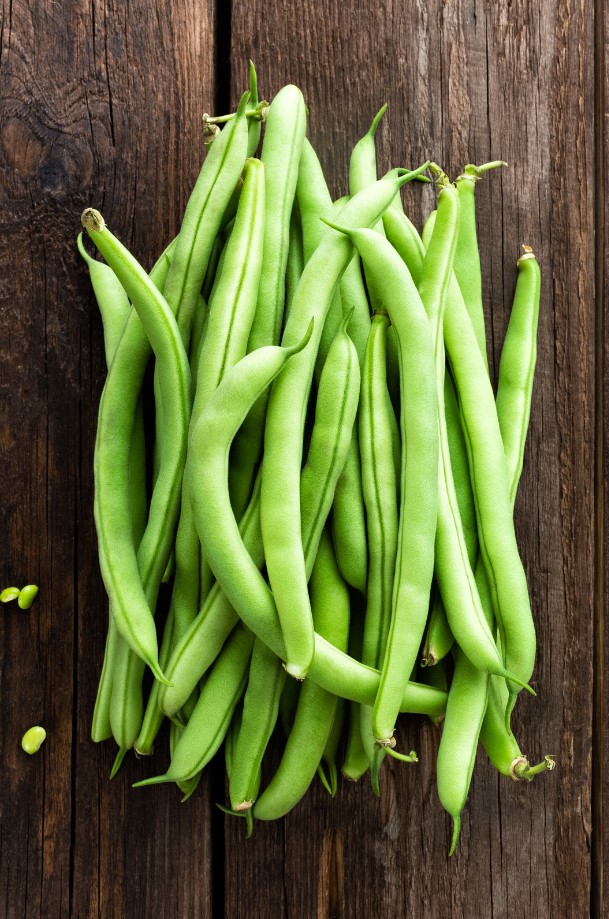
Green beans quickly became popular in European and American cooking, and their cultivation and availability spread to other parts of the world. Today, green beans are grown and consumed in many different countries, and they are enjoyed in a wide variety of dishes and cuisines.
- Green beans are a nutritious vegetable that are low in calories and high in fiber, vitamins, and minerals. They are a great addition to any diet, and they can be eaten cooked or raw.
- There are many different varieties of green beans, including string beans, snap beans, and French beans. Each variety has its own unique characteristics and flavors.
- When selecting green beans, look for beans that are firm, brightly colored, and free from blemishes. Store them in the refrigerator in a plastic bag until you are ready to use them.
Overall, the history and origins of green beans are a testament to the way that foods can travel and evolve over time. From their humble beginnings in South America to their widespread popularity around the world today, green beans are a vegetable that have stood the test of time and continue to be a favorite of many.
Nutritional Benefits Of Green Beans
Green beans are a nutritious and versatile vegetable that can be easily incorporated into your diet. Not only do they taste great, but they also offer a wide range of health benefits. For example, they are a rich source of vitamins and minerals, including vitamin C, vitamin K, and folate. Additionally, they are low in calories and fat, making them an excellent choice for those who are trying to lose weight or maintain a healthy diet.
Another great benefit of green beans is that they are high in fiber, which can help promote digestive health and prevent constipation. Fiber also helps to lower cholesterol levels and reduce the risk of heart disease. Moreover, the antioxidants found in green beans can help protect the body against damage from free radicals, which can often lead to chronic diseases such as cancer and Alzheimer’s.
- Low in calories and fat: Green beans offer the benefits of essential nutrients without the added calories and unhealthy fats that come with other foods.
- High in fiber: The fiber found in green beans helps to improve digestion and gut health, while also reducing the risk of heart disease and high blood pressure.
- Rich in vitamins and minerals: Green beans are a great source of essential vitamins and minerals such as vitamins C and K, folate, and iron.
- High in antioxidants: The antioxidants found in green beans can help protect the body against chronic diseases like cancer and Alzheimer’s.
Green beans are also a versatile vegetable that can be prepared in a variety of ways. For example, they can be steamed or boiled, stir-fried, roasted, or grilled. Furthermore, they can be easily added to salads, soups, stews, and casseroles.
| Cooking Method | Benefits |
|---|---|
| Steam | A quick and easy method that helps to preserve nutrients. |
| Boil | A great way to cook green beans with other vegetables and seasonings to enhance the flavor and texture. |
| Stir-Fry | A delicious way to prepare green beans with other vegetables, meats, and sauces for a tasty and healthy meal. |
| Grill | A smoky and flavorful way to cook green beans with other vegetables, meats, or fish for a satisfying and nutritious meal. |
In conclusion, green beans are a great addition to any healthy diet. They are packed with essential vitamins, minerals, and antioxidants, and are low in calories and fat. Whether you prefer them steamed, boiled, stir-fried, or grilled, they provide a variety of benefits that can help promote overall health and well-being. So go ahead and add some green beans to your next meal!
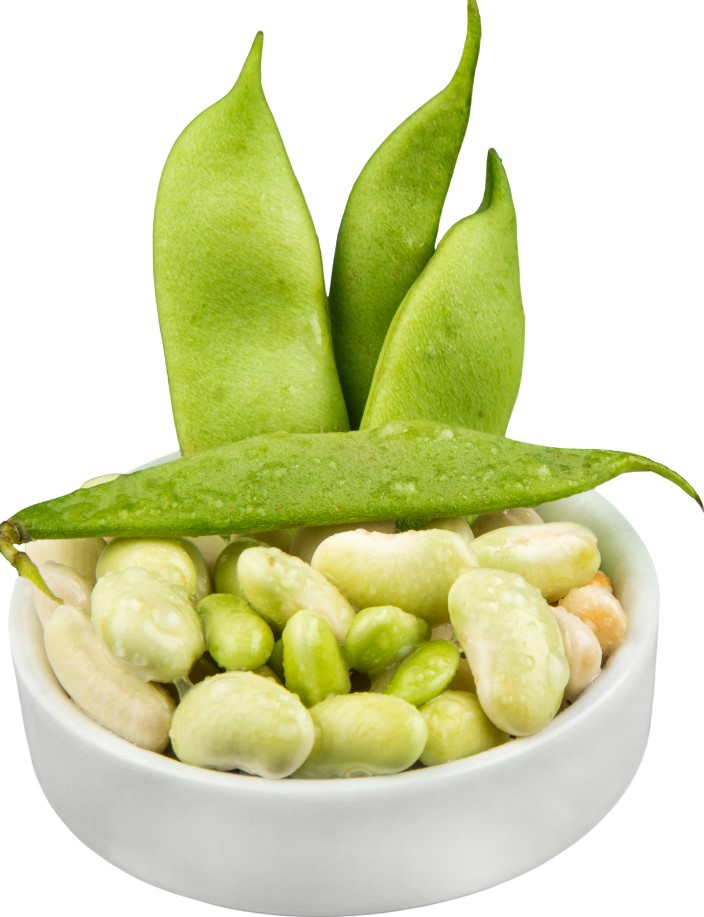
Different Varieties Of Green Beans
Green beans are a versatile and delicious vegetable that can be cooked in various ways. Did you know that there are different types of green beans available in the market?
1. Common Green Beans: Common green beans are also known as snap beans. They are long and straight with a green color. These beans are available in both fresh and frozen forms.
2. French Green Beans: Also known as haricot verts, French green beans are thinner and more delicate than common green beans. They have a sweeter taste and a tender, crisp texture. They are ideal for sautéing or blanching.
- TIP: French green beans are also great for salads as they retain their bright green color even after cooking.
3. Purple Green Beans: Purple green beans are also called burgundy beans. They are a deep purple color when raw and turn green when cooked. They have a sweet, nutty flavor and a tender texture. They are perfect for grilling or roasting.
- TIP: To retain their color, do not overcook purple green beans as they may turn brown.
4. Yellow Wax Beans: Yellow wax beans are a variety of green beans with a yellow color. They are slightly sweeter than common green beans and have a firm texture. They are great for pickling or canning.
| Green Bean Variety | Color | Texture | Best Cooking Method |
|---|---|---|---|
| Common Green Beans | Green | Firm | Steaming, Sautéing |
| French Green Beans | Green | Tender, Crisp | Blanching, Sautéing |
| Purple Green Beans | Purple (raw), Green (cooked) | Tender | Grilling, Roasting |
| Yellow Wax Beans | Yellow | Firm | Pickling, Canning |
By trying different varieties of green beans, you can add variety to your diet and enjoy different tastes and textures. Incorporate them into your meals for a healthy and flavorful addition!
How To Select And Store Green Beans
Green beans are a delicious and healthy addition to any meal. They are packed with nutrients, including fiber, vitamins A and C, and potassium. However, selecting and storing green beans can be a bit of a challenge. In this post, we will go over some tips on how to select and store green beans.
- Choosing Green Beans: When buying green beans, look for ones that are bright green, firm, and free of blemishes or bruises. They should snap when you bend them, indicating their freshness. Avoid beans that are yellowed or have brown spots, as this is a sign that they are past their prime.
- Storage: Once you have purchased your beans, store them in a plastic bag in the refrigerator. They can last up to a week this way.
- Preparation: Before using green beans, you will need to wash them thoroughly and remove any stem ends. You can do this by snapping off the stem ends or by cutting them with a knife.
- Cooking: Green beans can be cooked in a variety of ways, including steaming, boiling, sautéing or roasting. They are a great addition to salads, stir-fries, and casseroles.
By following these simple tips, you can ensure that your green beans stay fresh and flavorful. Experiment with different cooking methods and enjoy the many health benefits that green beans offer.
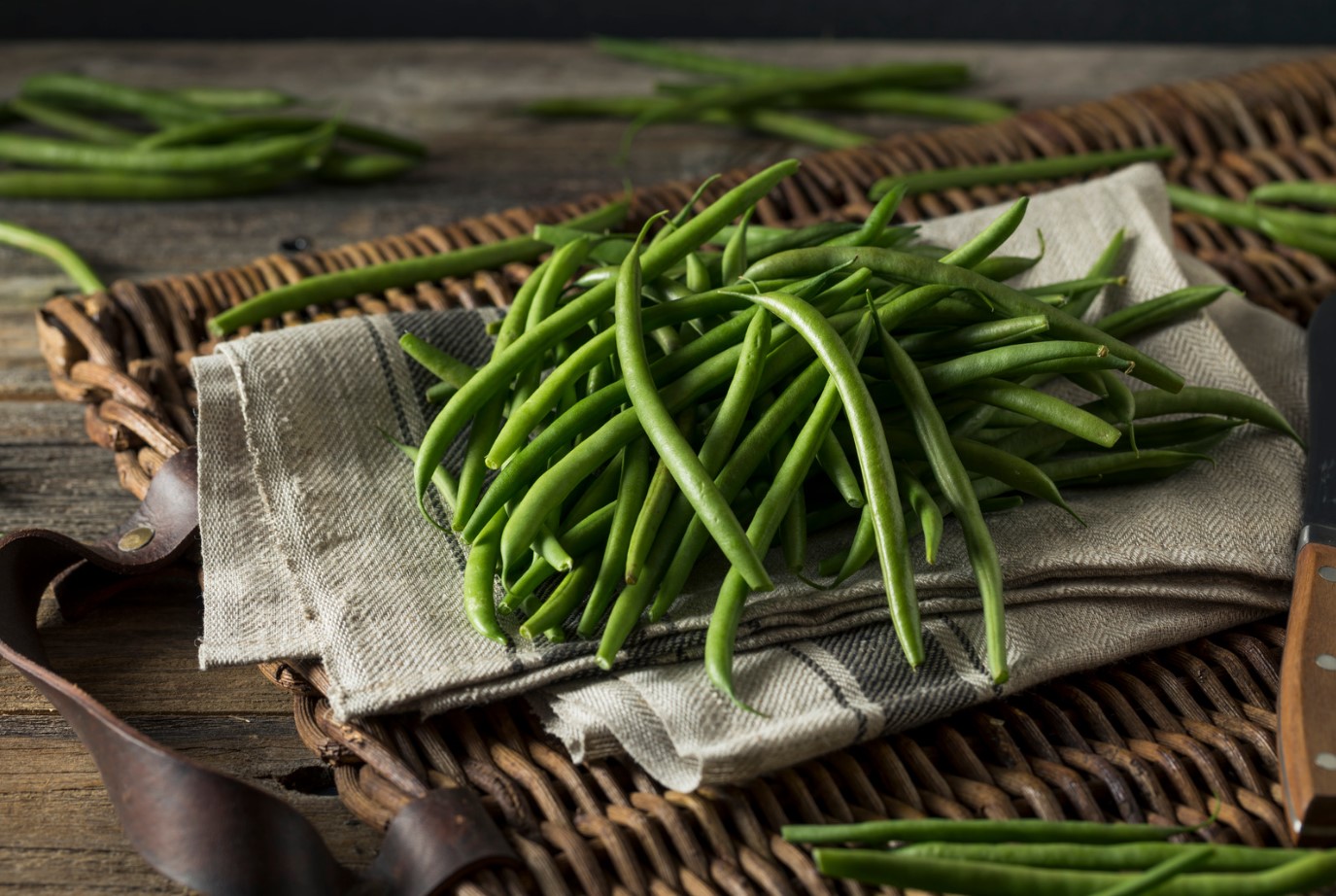
Different Cooking Methods For Green Beans
Green beans are a versatile, nutrient-dense vegetable that make for a delicious addition to any meal. One of the best things about green beans is the variety of cooking methods that can be used to prepare them. From simple steaming to exotic stir-frying, green beans can be cooked in a multitude of ways. Here are some different cooking methods for green beans that you can try out:
- Steaming – Steaming is perhaps the simplest cooking method for green beans. Simply place the green beans in a steamer basket and steam for a few minutes until they are tender but still firm. This method helps to retain the nutrients in the green beans.
- Boiling – Another easy cooking method for green beans is boiling. Simply bring a pot of salted water to a boil, add the green beans and boil until tender. Drain the green beans and season with salt and pepper.
- Sautéing – Sautéing is a quick and easy method for cooking green beans. Simply heat some oil in a pan, add the green beans and cook until they are tender but still crisp. You can also add some garlic, onions or other seasonings to add extra flavor to the dish.
- Roasting – Roasting is a great way to bring out the natural sweetness of green beans. Preheat your oven to 425°F, toss the green beans in some olive oil and season with salt and pepper. Roast the green beans for about 15-20 minutes, or until they are nicely browned and tender.
These are just a few of the different ways you can cook green beans. You can also try stir-frying, grilling or even deep-frying green beans for a unique and delicious twist on this classic vegetable.
| Cooking Method | Advantages | Disadvantages |
|---|---|---|
| Steaming | Retains nutrients, easy and quick | May lack flavor |
| Boiling | Easy and quick | May lose nutrients, may become mushy |
| Sautéing | Quick and flavorful, can add additional seasonings | May lose some nutrients |
| Roasting | Brings out natural sweetness, can add seasonings, easy and hands-off | May take longer than other methods, requires an oven |
In conclusion, there are many different ways to cook green beans, each with its own advantages and disadvantages. Try out a few different methods and see which one you like best. Whether you prefer steaming, sautéing, roasting or any other method, green beans are a healthy and delicious addition to any meal.
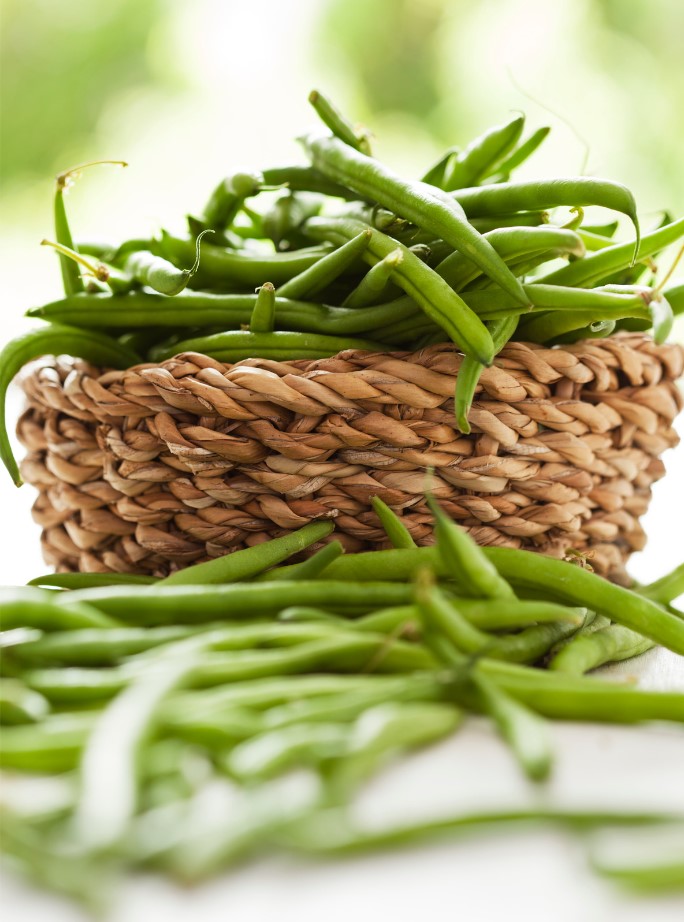
Unique Recipes For Green Bean Dishes
Unique Recipes for Green Bean Dishes Green beans are a versatile veggie that can be used in many dishes. Whether you’re looking for a side dish or a main course, green beans can provide a healthy and flavorful addition to any meal. Here are four unique recipes for green bean dishes that are sure to impress your taste buds.
Recipe 1: Green Bean Casserole
Ingredients:
- 1 can of condensed cream of mushroom soup
- 1/2 cup of milk
- 1 tsp soy sauce
- 1/4 tsp black pepper
- 4 cups of cooked green beans
- 1 1/3 cups of French-fried onions
Directions:
- Preheat oven to 350F.
- Mix soup, milk, soy sauce, black pepper, green beans, and 2/3 cup of onions in a casserole dish.
- Bake for 25 minutes.
- Top with remaining onions.
- Bake for an additional 5-10 minutes.
Recipe 2: Green Bean Fries
Ingredients:
- 1 pound of fresh green beans, trimmed
- 1/4 cup of all-purpose flour
- 1/4 cup of grated parmesan cheese
- 1/2 tsp garlic powder
- 1/2 tsp salt
- 1/4 tsp black pepper
- 1 egg, beaten
Directions:
- Preheat oven to 425F.
- In a shallow dish, mix flour, parmesan cheese, garlic powder, salt, and pepper.
- In another shallow dish, beat egg.
- Dip green beans into egg, then coat with flour mixture.
- Place on a baking sheet lined with parchment paper.
- Bake for 12-15 minutes, or until crispy.
Recipe 3: Green Bean and Ham Soup
Ingredients:
- 1 pound of green beans, trimmed and chopped
- 1 pound of ham, diced
- 4 cups of chicken broth
- 1 cup of chopped onion
- 1 cup of chopped celery
- 1/2 cup of heavy cream
- 2 tbsp of butter
Directions:
- Melt butter in a large pot over medium heat.
- Add onions and celery, cook until softened.
- Add ham and green beans, cook for 5 minutes.
- Add chicken broth, bring to a simmer.
- Cook for 20 minutes, or until green beans are tender.
- Stir in heavy cream.
- Serve hot.
Recipe 4: Green Bean and Quinoa Salad
Ingredients:
- 1 pound of green beans, trimmed and chopped
- 1 cup of cooked quinoa
- 1/2 cup of feta cheese
- 1/4 cup of olive oil
- 2 tbsp of honey
- 1 tbsp of dijon mustard
- 1 garlic clove, minced
Directions:
- Cook green beans in boiling water for 2-3 minutes, until tender.
- Drain and rinse under cold water.
- In a large bowl, mix green beans, quinoa, and feta cheese.
- In a small bowl, whisk together olive oil, honey, mustard, and garlic.
- Pour dressing over green bean mixture and toss to combine.
Try out these unique recipes for green bean dishes and add some tasty and healthy options to your meal repertoire!
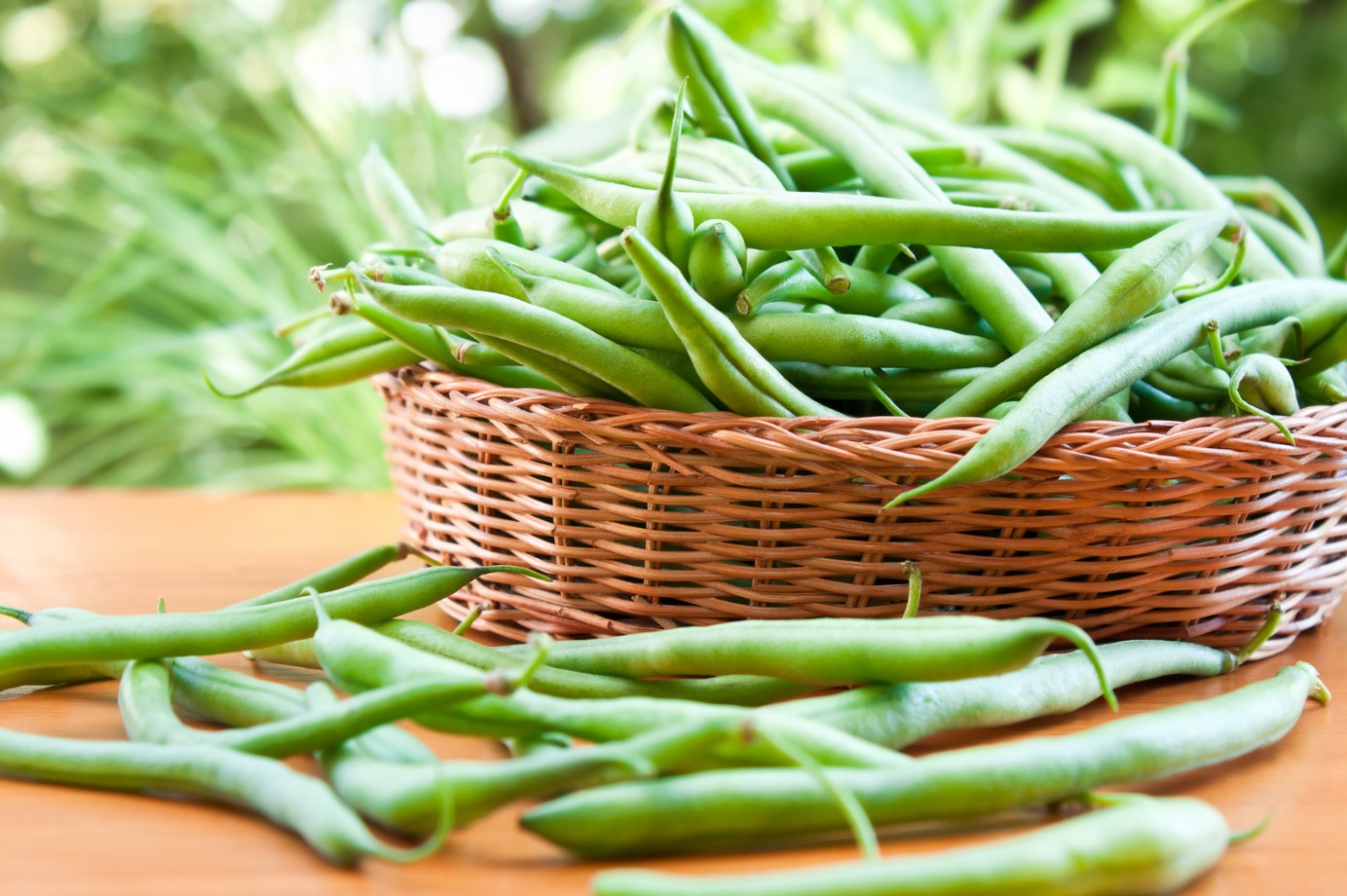
Green Beans İn Traditional Diets Around The World
Green beans, also known as snap beans or string beans, are a popular and versatile vegetable that has been enjoyed by people for centuries. They are a common ingredient used in many traditional diets around the world. Green beans are not only easy to grow, but they are also packed with nutrients that are essential for maintaining good health. In this blog post, we will explore how green beans are used in traditional diets around the world and the many health benefits they offer.
In many Asian countries, green beans are a staple food in traditional diets. They are often stir-fried with other vegetables and served as a side dish or added to soups and stews. In India, green beans are used in a variety of dishes, including curries and dal. In some parts of Africa, green beans are cooked with coconut milk and spices, while in the Middle East, they are often used in salads.
Green beans are also widely consumed in Latin America, where they are known as “judias verdes” in Spanish. In Mexico, green beans are often served as a side dish or used in salads. In Brazil, they are a common ingredient in feijoada, a traditional stew made with black beans and pork.
One of the great things about green beans is that they are so versatile. They can be steamed, boiled, roasted, sautéed, stir-fried, or eaten raw. Not only are they delicious, but they are also incredibly nutritious.
- Green beans are an excellent source of fiber, which is essential for maintaining a healthy digestive system.
- They are also rich in vitamins and minerals, including vitamin C, vitamin K, and folate.
- Green beans are low in calories and fat, making them an excellent choice for those who are watching their weight.
- They are also a good source of antioxidants, which can help protect your body against disease and illness.
If you are looking to incorporate more green beans into your diet, there are many delicious ways to do so. Try adding them to soups, stews, and casseroles. You can also roast them in the oven with some olive oil and spices or sauté them with garlic and onions for a simple and tasty side dish.
In conclusion, green beans are a healthy and versatile vegetable that has been enjoyed by people all over the world for centuries. They are packed with nutrients and are used in many traditional diets around the world. So the next time you are looking for a nutritious and delicious vegetable to add to your meal, consider giving green beans a try!
The Role Of Green Beans İn Weight Management
When it comes to weight management, including more green beans in your diet can be a highly beneficial step towards achieving your goals. Green beans are low in calories, high in fiber and nutrient-dense, making them a great food choice for weight loss and maintenance.
One of the main ways that green beans can aid in weight management is through their high fiber content. Fiber helps to keep you feeling full and satisfied, which can reduce your overall calorie intake throughout the day. In fact, just one cup of cooked green beans contains about 4 grams of fiber.
- Green beans are also low in calories, with one cup of cooked beans containing only about 44 calories.
- This makes them a great option for those looking to create a calorie deficit in their diet, which is essential for weight loss.
- In addition to their fiber and low calorie content, green beans are also rich in vitamins and minerals such as vitamin C, vitamin K, and folate.
Another benefit of green beans for weight management is their versatility in cooking. You can eat them raw, steamed, boiled, or roasted, and they make a great addition to salads, soups, stews, and other dishes.
| Cooking Method | Nutritional Value |
|---|---|
| Boiled | Retains high amounts of vitamin C and folate |
| Steamed | Retains most of its nutrients while being low in calories |
| Roasted | Enhances its natural sweetness and provides a crispy texture |
Overall, adding more green beans to your diet can be an effective way to support your weight management goals while also providing your body with essential nutrients.
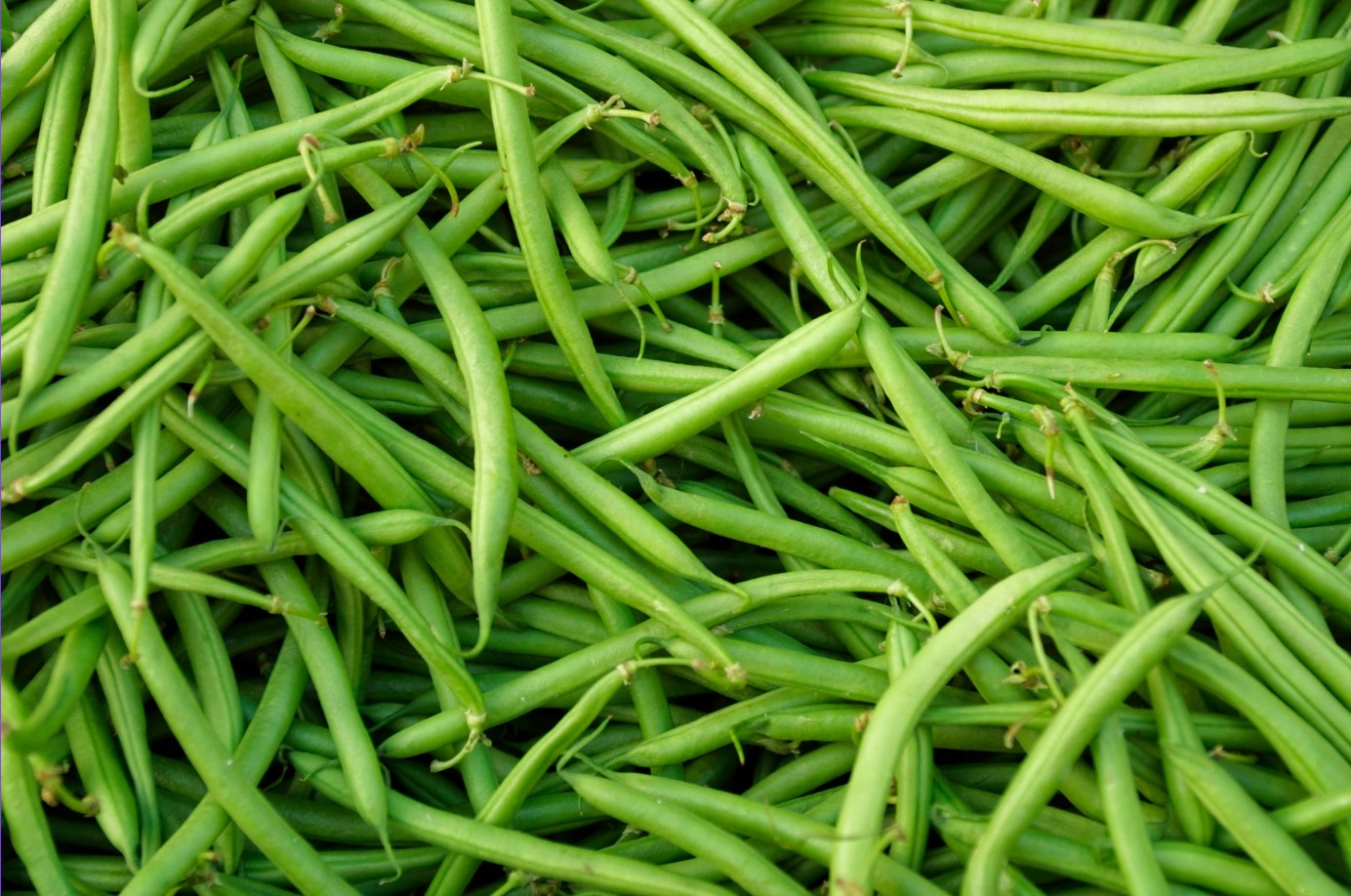
How Green Beans Help Support A Healthy İmmune System
Green beans, also known as snap beans or string beans, are a versatile and tasty addition to any meal. These nutrient-packed vegetables are an excellent source of fiber, vitamins, and minerals that can promote good health and help fight off disease. In fact, green beans are particularly beneficial when it comes to supporting a healthy immune system.
One of the ways that green beans help to boost immune function is through their high vitamin C content. Vitamin C is a powerful antioxidant that plays a crucial role in protecting the body against harmful pathogens and infections. Just one cup of green beans contains nearly 20% of the daily recommended intake of vitamin C.
- Green beans also contain other important vitamins and minerals that support immune function, including:
- Vitamin A
- Vitamin K
- Magnesium
- Potassium
- Folate
In addition to their impressive nutrient profile, green beans are also rich in natural plant compounds that can help to strengthen the immune system. These compounds, such as flavonoids and carotenoids, have been shown to have anti-inflammatory and antioxidant properties that protect against infectious diseases and chronic illnesses.
| Green Bean Nutrition Facts | Per 1 Cup (125g) |
|---|---|
| Calories | 34 |
| Protein | 2g |
| Carbohydrates | 7g |
| Fiber | 3g |
| Fat | 0g |
So how can you incorporate more green beans into your diet to reap these immune-boosting benefits? Try adding them to salads, stir-fries, soups, or casseroles. Roasting or grilling green beans with a pinch of sea salt and olive oil makes for a simple and delicious side dish. You can even snack on them raw with some hummus or other healthy dips.
All in all, green beans are a tasty and nutritious addition to any meal that can help to support a healthy immune system. With their impressive array of vitamins, minerals, and plant compounds, adding more green beans to your diet is an easy way to boost your overall health and wellbeing.
Tips For İncorporating More Green Beans İnto Your Diet
If you are looking to introduce more green beans into your diet, you are in luck. Not only are they delicious, but they are also incredibly nutritious! These versatile legumes can be added to a variety of dishes, from soups and salads to stir-frys and casseroles, making it easy for you to get your daily dose of vitamins and minerals in a delicious way. Here are some tips to help you incorporate more green beans into your diet:
- Roasted Green Beans: Roasting green beans is a great way to elevate their natural flavors. Preheat your oven to 425°F and toss your green beans with olive oil, garlic, salt, and pepper. Spread them out on a baking sheet and roast for 15-20 minutes or until they are crispy and tender.
- Green Bean Salads: Green beans are a fantastic addition to any salad. Simply blanch them in boiling water for a few minutes and then toss them with your favorite salad dressing and other veggies, such as cherry tomatoes, cucumbers, and red onions.
- Green Bean Stir-Frys: Adding green beans to your favorite stir-fry recipe is an easy way to get more fiber and nutrients into your diet. Simply sauté your green beans with garlic, ginger, and soy sauce and then add them to your stir-fry along with other veggies and protein sources.
- Green Bean Casseroles: Who doesn’t love a good green bean casserole? Mix cooked green beans with cream of mushroom soup, milk, and crispy fried onions and bake until bubbly and golden brown.
By incorporating more green beans into your diet, you can reap the endless benefits of their nutritional value. Green beans are packed with fiber, folate, potassium, and vitamins C and K. They are also low in calories and high in antioxidants, making them an excellent choice for weight management and overall health. Whether you are a vegetarian, vegan, or simply looking to add more veggies to your plate, green beans are a delicious and nutritious addition to any meal. So why not give these tips a try and see how you can incorporate more green beans into your meals?
How Green Beans Can Benefit Heart Health
Green beans may be a common ingredient in many dishes, but did you know that they come with a lot of health benefits? One of the many benefits of green beans is that they can promote heart health. Heart disease is one of the biggest health threats that we face today, and incorporating green beans into your meals may help lower your risk for this condition. Here are some of the ways that green beans can benefit heart health.
Green Beans Are High In Fiber:One of the best things about green beans is that they are a great source of dietary fiber. Fiber helps keep your digestive system healthy and regulates your cholesterol levels. Studies have found that people who consume more fiber have lower levels of LDL (bad) cholesterol in the blood, which puts them at a lower risk of heart disease.
Green Beans Are Low In Sodium:Another reason why green beans are good for the heart is that they are low in sodium. Too much sodium in your diet can cause your blood pressure to rise, which can put more strain on your heart. Green beans are a great food if you’re looking to reduce your sodium intake.
- Green Beans Contain Potassium: Potassium is a mineral that helps regulate blood pressure and heart function. Studies have found that consuming a diet rich in potassium can help reduce the risk of heart disease. Luckily, green beans are a great source of this important mineral.
- Green Beans Provide Antioxidants:Antioxidants help protect against the damage caused by free radicals in the body. Green beans are a rich source of antioxidants, which may help protect your heart from damage and guard against heart disease.
Overall, green beans are one of the best foods you can eat for heart health. They are low in sodium, high in fiber, and provide plenty of important nutrients that can help protect your heart. Whether you’re looking to reduce your risk of heart disease or simply improve your overall health, adding green beans to your diet is a great way to start.
Green Beans As A Rich Source Of Antioxidants
Green beans, also known as string beans or snap beans, are a popular vegetable loaded with numerous health benefits. They are low in calories, high in fiber, and rich in vitamins and minerals, making them an excellent choice for maintaining good health. One of the major health benefits of green beans is that they are a rich source of antioxidants. Antioxidants are essential for protecting the body from harmful free radicals that can cause oxidative stress and lead to various health problems.
Green beans are a good source of several antioxidant compounds, including quercetin, catechins, kaempferol, and epicatechins. These antioxidants work together to neutralize free radicals and help protect the body from cellular damage. They also have anti-inflammatory properties, which can help reduce the risk of chronic diseases like heart disease, diabetes, and cancer.
- Quercetin: Quercetin is a flavonoid antioxidant that is found in many fruits and vegetables. It has been shown to have a range of health benefits, including anti-inflammatory and anti-cancer properties. Some studies also suggest that quercetin may help reduce the risk of heart disease and improve mental health.
- Catechins: Catechins are a type of antioxidant found in green tea, cocoa, and certain fruits and vegetables. They are known for their anti-inflammatory and anti-cancer properties and may also help improve heart health by reducing cholesterol levels and preventing blood clots.
- Kaempferol: Kaempferol is another flavonoid antioxidant that is found in many plant foods, including green beans. It has been shown to have anti-inflammatory, anti-cancer, and neuroprotective properties.
- Epicatechins: Epicatechins are a type of flavonoid antioxidant found in tea, cocoa, and some fruits and vegetables. They have been shown to have anti-inflammatory, antioxidant, and anti-cancer properties.
Aside from being a rich source of antioxidants, green beans also contain several other nutrients that are beneficial for your health. They are a good source of vitamin C, vitamin K, vitamin A, and folate, as well as minerals like iron, magnesium, and potassium.
To get the most out of the antioxidant benefits of green beans, it is recommended that you eat them raw or lightly steamed. Cooking can reduce the levels of some antioxidants, but it can also make other nutrients more bioavailable. If you prefer to cook your green beans, try steaming or sautéing them quickly to retain their nutritional value.
| Antioxidant | Amount in 1 cup cooked green beans |
|---|---|
| Quercetin | 17 milligrams |
| Catechins | 4 milligrams |
| Kaempferol | 3 milligrams |
| Epicatechins | 2 milligrams |
Overall, green beans are an excellent source of antioxidants that can help protect your body from cellular damage and reduce the risk of chronic diseases. Incorporating them into your diet is a simple way to boost your nutrient intake and support optimal health.
How Green Beans Promote Healthy Digestion
Green beans are not only a tasty addition to your meals, but they are also packed with numerous health benefits. One of the most significant benefits of green beans is the promotion of healthy digestion.
Green beans are a rich source of dietary fiber, which is essential for maintaining a healthy digestive system. Fiber adds bulk to the stool and helps it move smoothly through the intestines, preventing constipation and other digestive problems. Eating green beans regularly can also promote the growth of healthy bacteria in your gut, which helps with digestion and absorption of nutrients from food.
- Incorporating green beans in your diet can help to prevent common digestive disorders such as bloating, gas, and stomach cramps.
- The natural fibers present in these beans can prevent the build-up of toxic wastes in the body and can also help to reduce the risk of colon cancer.
- Moreover, green beans are rich in antioxidants that help to flush out toxins from the body and boost overall digestive health.
If you are already experiencing digestive issues, green beans can help alleviate them. They are low in fat, and the natural compounds present in them have anti-inflammatory properties that can soothe the digestive system. Eating green beans as part of a balanced diet can also help with weight loss, which is essential for health and digestion.
| Health Benefits of Green Beans for Digestion | How to Incorporate Green Beans into Your Diet |
|---|---|
|
|
Overall, green beans are a great addition to your diet if you want to promote healthy digestion. With their rich fiber content and antioxidant properties, they can help improve your digestive system and keep it functioning optimally. So, next time you are at the grocery store, be sure to grab some fresh green beans and start enjoying their many benefits.
Green Beans İn Vegan And Vegetarian Diets
Green beans have been a staple in many different cultures for centuries, and it’s no surprise why. They’re delicious, easy to cook, and incredibly nutritious. One of the best things about green beans is that they are a versatile ingredient that can be used in all sorts of dishes, making them a great choice for vegans and vegetarians. In this blog post, we’ll explore the many benefits of green beans and why they are a great addition to any plant-based diet.
One of the main benefits of green beans is that they are packed with essential vitamins and minerals. They are an excellent source of vitamin C, which is essential for boosting your immune system and keeping your skin healthy. They also contain vitamin K, which is important for healthy bones and blood clotting. In addition to vitamins, green beans are rich in antioxidants and fiber, both of which are important for maintaining good health.
- One great way to use green beans in a vegan or vegetarian diet is to add them to stir-fries. Simply chop up your green beans into bite-sized pieces and add them to your favorite stir-fry recipe. They’ll add a satisfying crunch and a burst of flavor that will elevate your dish to the next level.
- Another delicious way to incorporate green beans into your diet is to make a cold salad. Simply blanch your green beans until they are tender but still have a bit of crunch, then toss them with some cherry tomatoes, sliced red onion, and a simple vinaigrette. It’s a refreshing and healthy way to enjoy this versatile vegetable.
- When it comes to cooking with green beans, roasting them is another great option. Simply toss your green beans with a bit of olive oil and your favorite seasonings, then roast them in the oven until they are crisp and tender. They make a delicious side dish that pairs well with just about anything.
Overall, green beans are an excellent addition to any vegan or vegetarian diet. They are packed full of nutrients and can be used in a variety of different ways. Whether you choose to stir-fry them, make a cold salad, or roast them in the oven, there are countless ways to enjoy this delicious vegetable. So next time you’re looking for a healthy and satisfying meal, don’t forget to add some green beans to your plate!
Benefits Of Using Green Beans İn Baby Food Recipes
Green beans are known for their many health benefits, such as being a great source of vitamins and minerals. However, did you know they are also a great choice for baby food recipes? Here are some benefits of incorporating green beans into your baby’s diet:
- High in Nutrients: Green beans are packed with important nutrients that a growing baby needs, such as vitamin C, vitamin K, and fiber.
- Easy to Digest: The soft texture of green beans makes them an easy food for babies to digest, especially when pureed.
- Low in Allergens: Green beans are a low-allergen food, making them a good choice for babies who may have allergies or sensitivities.
So, how can you incorporate green beans into your baby’s diet? Here are some simple recipes:
| Recipe | Ingredients | Instructions |
|---|---|---|
| Green Bean Puree | 1 cup fresh or frozen green beans (trimmed), 1/2 cup water | 1. Steam the green beans until tender. 2. Puree the green beans in a blender or food processor until smooth. 3. Add water to thin out the puree, if needed. |
| Green Bean and Potato Mash | 1 cup fresh or frozen green beans (trimmed), 1 potato (peeled and cubed), 1/2 cup water | 1. Steam the green beans and potato until tender. 2. Mash the green beans and potato together until smooth, adding water as needed. |
Green beans are a versatile food that can be used in many different recipes for babies. Whether you choose to puree them or mash them with other foods, they are sure to provide a nutritious addition to your baby’s diet.